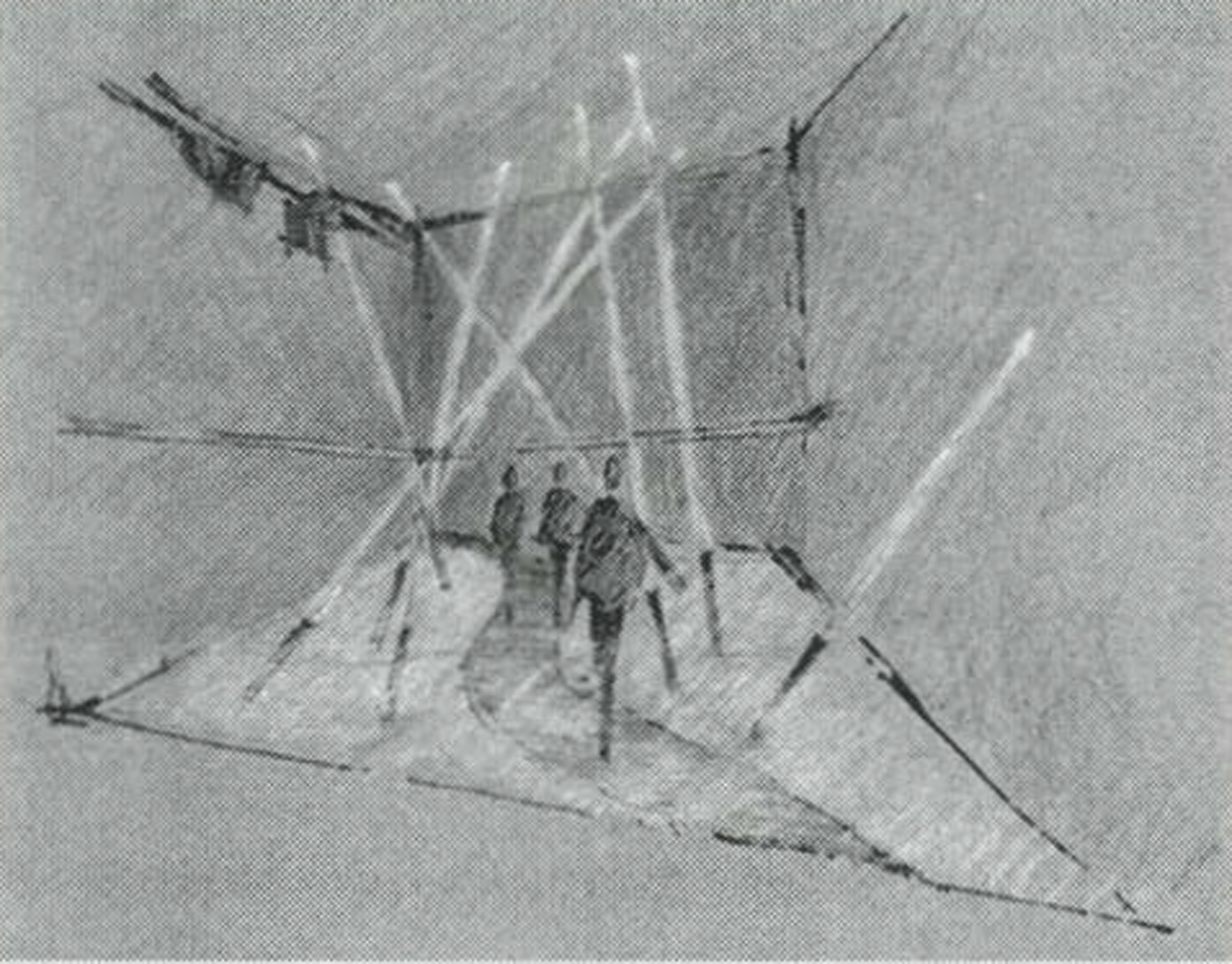Louis-Philippe Demers, Bill Vorn: Espace Vectoriel
Artist(s):
Title:
- Espace Vectoriel
Exhibition:
Category:
Artist Statement:
Movement, sound, and light from objects are inevitable. Interaction with machines is centuries old. We implant life in machines so they can return life to our own environments. This installation is about the displacement of existing artifacts. It imposes our own perception of behavior upon a society of mechanical, audio and visual elements.
Espace Vectoriel paraphrases the mathematical term, “vector space” in which information or behavior is expressed in terms of vectors: entities represented graphically by lines or arrows. We often see computer graphics images made of vertices and vectors: a raw representation of a more complex object.
Espace Vectoriel is an interactive sculpture consisting of motorized tubes with a speaker and a light source within. By building a society of these elements, a group of eight, a simple scheme becomes complex and intriguing.
The motorized tube is approximately 1.25 meters long and has two degrees of freedom: full 360 degrees rotation and 170 degrees tilt. The sampled sound, light level and position of each tube are controlled independently and, equipped with custombuilt synchronized control of all these media, interesting patterns and variations are created. For example, complementing tube movement can be complemented by light fading in while the tube and sound are rising. Variations of counterpoints in audio as well as movements.
Through this society of tubes, relationships between physical movements and their sound or light counterparts are explored. The concept of “replication” is fundamental to this work. Rituals, hierarchy, artificial life, chaos, the collective versus the individual, are among the relationships explored by using multiple modules. Organic compositions are also envisioned; for example, simulating the effect of wind on a field by a coordinated panning of movement, sound, and light, among all the tubes.
A series of eight sonar sensors makes the “society” react to the viewers. For example, on specific “windows,” a tube can withdraw from its common path and bend over, spilling sound on the viewer standing in a particular spot; a direct statement about individuality. The interactive behavior of this work evokes the sensory organ of a natural organism. Combined with the interaction, a dark and hazy space recreates a hypothetical natural environment.
The society uses Bill Vorn’s extensive sampling system (each tube has an independent audio output) controlled by MAX and Louis-Philippe Demers’ lighting control system and customized robotics interface. Fabrication of the mechanisms and electronics is credited to Andrew Galbreath, Kevin Hutchings, and Alex Solomon of Form Dynamics (Toronto).
This project has been made possible through the assistance of Le Ministere des Affaires Culturelles du Quebec under the Research-Innovation program.
Contributors:
Andrew Galbreath, Kevin Hutchings, Philippe Jean, and Alain Martel






